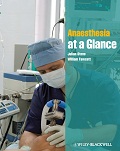A 40-year-old woman is listed for a hysteroscopy. She weighs 112 kg and is 160 cm tall. She reports no other medical conditions, takes the combined oral contraceptive pill and smokes between 10 and 20 cigarettes per day.
-
1. What is her body mass index and in which category is she?
Show Answer
Correct answer: Her BMI is 43.75.
This is calculated according to the formula of weight in kg/height in metres2 (112/1.62). This BMI puts her in the morbidly obese category.
-
2. Summarize the anaesthetic concerns.
Show Answer
Correct answer: The main anaesthetic concerns are related to her obesity:
- airway/intubation – she might be more difficult to maintain on bag mask valve ventilation;
- endotracheal intubation might also be more difficult;
- risk of reflux of gastric contents;
- difficulty establishing i.v. access;
- using the correct sized blood pressure cuff ;
- lifting and transferring the patient once anaesthetized.
She will be in the lithotomy position for her operation. This position will further reduce FRC, which is already diminished by obesity and anaesthesia.
-
3. What are the anaesthetic options that are suitable for this patient?
Show Answer
Correct answer: Due to her morbid obesity, it might be appropriate to discuss with the surgeon the possibility of performing the procedure with local anaesthesia alone, to obviate the need for regional or general anaesthesia. If this is not possible, the two main options would be:
- spinal anaesthesia – this might be technically difficult to perform;
- general anaesthesia with endotracheal intubation.
-
4. What are her postoperative risks?
Show Answer
Correct answer: Obese patients are at risk of hypoxaemia, especially in those who smoke as they are at increased risk of bronchospasm and secretion retention. There is also the risk of postoperative hypoventilation related to obstructive sleep apnoea as well as delayed recovery as lipophilic drugs diffuse out of excess adipose stores.
She is at increased risk of thromboembolism (see following point).
-
5. Is she at increased risk of thromboembolism? What steps should be taken to minimize this risk?
Show Answer
Correct answer: Yes, she is at increased risk due to:
- obesity
- smoking
- the oral contraceptive pill.
In addition, there is the added risk conferred by surgery (increased in pelvic operations). Although she will mobilize quickly after the operation, a single dose of prophylactic heparin (e.g. deltaparin) should be given.

